Filter by
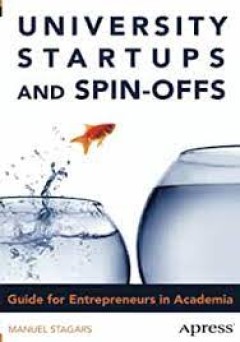
University Startups and Spin-Offs Guide for Entrepreneurs in Academia
University Startups and Spin-Offs teaches university students, researchers, and educators the most effective strategies and tactics for launching their own startups from academic platforms with the backing of school programs, public grants, incubators, seed accelerators, and private partnerships in all parts of the world. Serial entrepreneur Manuel Stagars advises students, faculty, and rese…
- Edition
- -
- ISBN/ISSN
- 978-1-4842-0623-2
- Collation
- XIV, 248
- Series Title
- -
- Call Number
- -
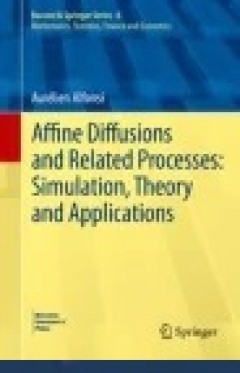
Affine Diffusions and Related Processes: Simulation, Theory and Applications
This book gives an overview of affine diffusions, from Ornstein-Uhlenbeck processes to Wishart processes and it considers some related diffusions such as Wright-Fisher processes. It focuses on different simulation schemes for these processes, especially second-order schemes for the weak error. It also presents some models, mostly in the field of finance, where these methods are relevant and pro…
- Edition
- Ed. 1
- ISBN/ISSN
- 978-3-319-05221-2
- Collation
- XIII, 252
- Series Title
- Bocconi & Springer Series
- Call Number
- 330 ALF a

Bio-based Polyols and Polyurethanes
This brief outlines the most recent advances in the production of polyols and polyurethanes from renewable resources, mainly vegetable oils, lignocellulosic biomass, starch, and protein. The typical processes for the production of polyols from each of the above mentioned feedstocks are introduced and the properties of the resultant polyols and polyurethanes are also discussed.
- Edition
- -
- ISBN/ISSN
- 978-3-319-21539-6
- Collation
- -
- Series Title
- -
- Call Number
- 661.03
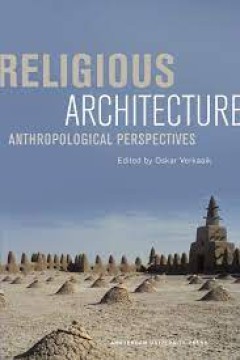
Religious Architecture : Anthropological Perspectives
Borrowing from a range of theories on spacemaking and material religion, and with contributions from anthropologists working in the United Kingdom, Mali, Brazil, Spain, and Italy, this fascinating and comprehensive study develops an anthropological perspective on modern religious architecture including mosques, churches, and synagogues. Religious Architecture examines how religious buildings ta…
- Edition
- -
- ISBN/ISSN
- -
- Collation
- -
- Series Title
- -
- Call Number
- 720 REL
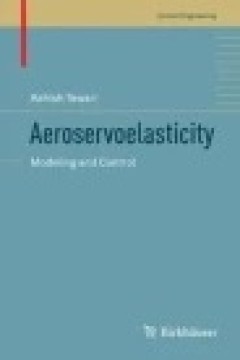
Aeroservoelasticity: Modeling and Control
This monograph presents the state of the art in aeroservoelastic (ASE) modeling and analysis and develops a systematic theoretical and computational framework for use by researchers and practicing engineers. It is the first book to focus on the mathematical modeling of structural dynamics, unsteady aerodynamics, and control systems to evolve a generic procedure to be applied for ASE synthesis. …
- Edition
- Ed. 1
- ISBN/ISSN
- 978-1-4939-2368-7
- Collation
- XI, 318
- Series Title
- Control Engineering
- Call Number
- 629.47 TEW a
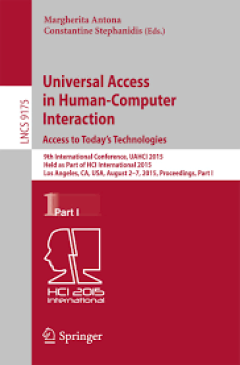
Universal Access in Human-Computer Interaction. Access to the Human Environme…
The four LNCS volume set 9175-9178 constitutes the refereed proceedings of the 9th International Conference on Learning and Collaboration Technologies, UAHCI 2015, held as part of the 17th International Conference on Human-Computer Interaction, HCII 2015, in Los Angeles, CA, USA in August 2015, jointly with 15 other thematically similar conferences. The total of 1462 papers and 246 posters pres…
- Edition
- -
- ISBN/ISSN
- 978-3-319-20687-5
- Collation
- 226 b/w illustrations
- Series Title
- -
- Call Number
- -
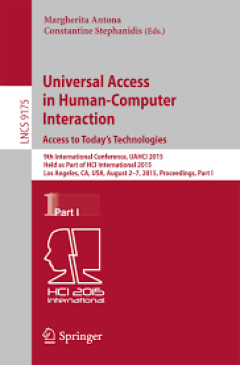
Universal Access in Human-Computer Interaction. Access to Today's Technologie…
The four LNCS volume set 9175-9178 constitutes the refereed proceedings of the 9th International Conference on Learning and Collaboration Technologies, UAHCI 2015, held as part of the 17th International Conference on Human-Computer Interaction, HCII 2015, in Los Angeles, CA, USA in August 2015, jointly with 15 other thematically similar conferences. The total of 1462 papers and 246 posters pres…
- Edition
- -
- ISBN/ISSN
- 978-3-319-20678-3
- Collation
- 183 b/w illustrations
- Series Title
- -
- Call Number
- -
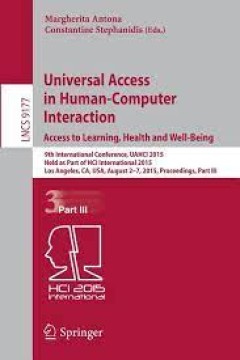
Universal Access in Human-Computer Interaction. Access to Learning, Health an…
The four LNCS volume set 9175-9178 constitutes the refereed proceedings of the 9th International Conference on Learning and Collaboration Technologies, UAHCI 2015, held as part of the 17th International Conference on Human-Computer Interaction, HCII 2015, in Los Angeles, CA, USA in August 2015, jointly with 15 other thematically similar conferences. The total of 1462 papers and 246 posters pres…
- Edition
- -
- ISBN/ISSN
- 978-3-319-20684-4
- Collation
- 262 b/w illustrations
- Series Title
- -
- Call Number
- -
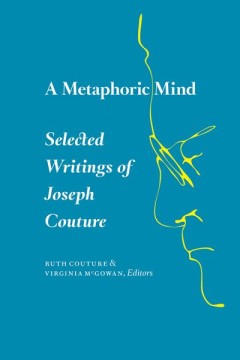
A Metaphoric Mind Selected Writings of Joseph Couture
With a foreword by Lewis Cardinal, A Metaphoric Mind brings together for the first time key works selected from among Dr. Joe’s writings, published and unpublished. Spanning nearly thirty years, the essays invite us to share in his transformative legacy through a series of encounters, with Aboriginal spirituality and ancestral ways of knowing, with Elders and their teachings, with education a…
- Edition
- -
- ISBN/ISSN
- 9781926836522.01
- Collation
- -
- Series Title
- -
- Call Number
- 329 pages
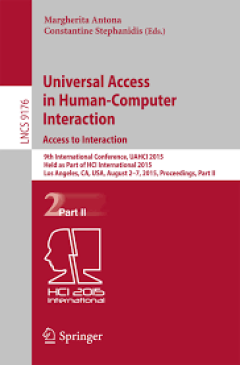
Universal Access in Human-Computer Interaction. Access to Interaction 9th In…
The four LNCS volume set 9175-9178 constitutes the refereed proceedings of the 9th International Conference on Learning and Collaboration Technologies, UAHCI 2015, held as part of the 17th International Conference on Human-Computer Interaction, HCII 2015, in Los Angeles, CA, USA in August 2015, jointly with 15 other thematically similar conferences. The total of 1462 papers and 246 posters pres…
- Edition
- -
- ISBN/ISSN
- 978-3-319-20681-3
- Collation
- 260 b/w illustrations
- Series Title
- -
- Call Number
- -
 Computer Science, Information & General Works
Computer Science, Information & General Works  Philosophy & Psychology
Philosophy & Psychology  Religion
Religion  Social Sciences
Social Sciences  Language
Language  Pure Science
Pure Science  Applied Sciences
Applied Sciences  Art & Recreation
Art & Recreation  Literature
Literature  History & Geography
History & Geography